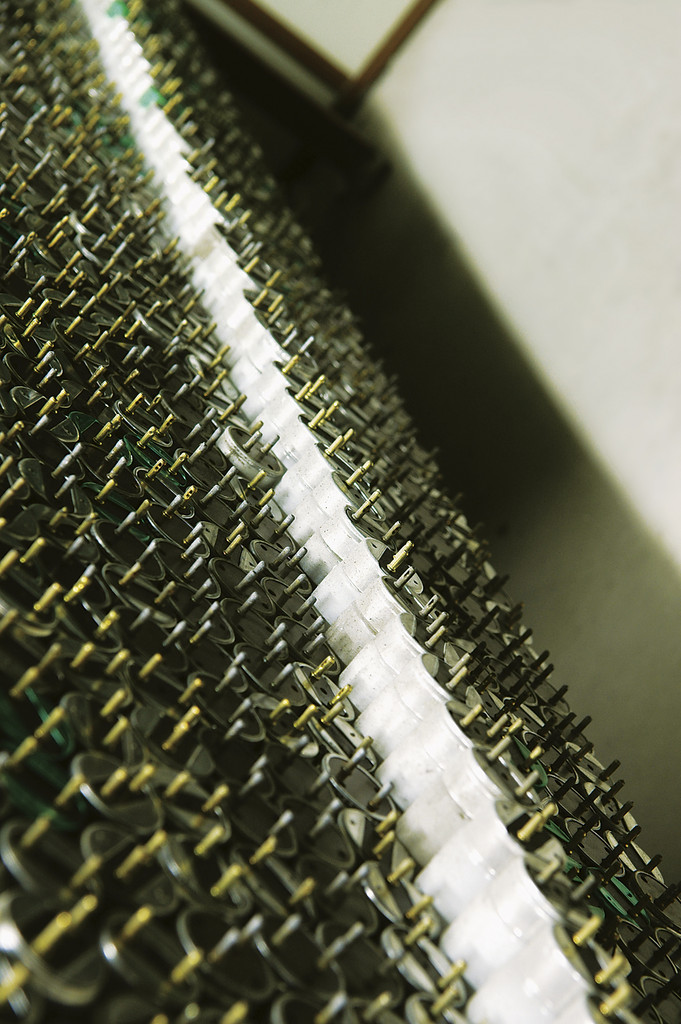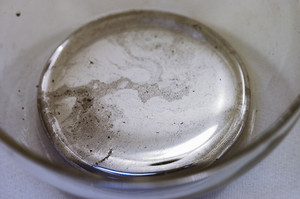Brazil recycles more aluminum cans than most other countries in the world, with a reuse rate of some 90%. This situation is the opposite when it comes to fluorescent tubes. Of the roughly 100 million tubes produced annually in Brazil, only 6% are recycled or disposed of in suitable places. In Holland, this percentage is 83%, and in Germany, 50%. Almost all old fluorescent tubes in Brazil are inadequately disposed of at dumps and landfills. To turn around this situation, which is hazardous to the environment because of contamination by the mercury in the lamps, Tramppo Recicla has developed a technology that decontaminates and recycles lamp components, making it possible to return the raw materials to the industry. In July of the last year, the company, established in 2003 within Cietec (the Technology Companies Incubator Center) at Ipen (the Energy and Nuclear Energy Research Institute), on the USP campus, obtained an operating license from Cetesb (the Environmental Sanitation and Technology Company). In late March, it was about to finish the expansion of its facilities in São Paulo, in order to start processing 90 thousand units per month.
Tramppo’s lamp decontamination and recycling system complies with sustainability and cleaner production principles. The equipment, entirely designed and developed at the company, separates the lamp components – glass, mercury, phosphoric powder and aluminum ends – and makes them available as raw material to be reused by several business sectors. The recycling process does not require dumping waste in landfills, thus reducing the volume of generated waste and, in particular, avoiding environmental contamination. The quality of the process is guaranteed through tests carried out at the company itself and through validation conducted by IPT (the Technology Research Institute), Tramppo’s strategic partner. For each set of fluorescent tubes to be recycled, the light supplying company receives a Decontamination, Recycling and Appropriate Disposal Certificate. Tramppo’s main clients include Iamspe (the Civil Servants Hospital), with an annual volume of 40 thousand tubes, the Albert Einstein Hospital, with 18 thousand, the University of São Paulo (USP), with 15 thousand, and the Paulista Shopping Center, with12 thousand. All of them are in the city of São Paulo.
The domestic market for fluorescent tube recycling is still small and only a few companies compete in it. According to electronic engineer Elaine Menegon, a Tramppo partner, after analyzing the cost of the recycling equipment of the Swedish company MRT System, a world leader in this sector, the company became sure that the only way to become a used fluorescent tube management company was to develop its own technology. “The equipment would cost about – 1 million, installed. It was too much money. We then realized we needed to develop our own equipment,” she says. To do so, the company was granted R$ 450 thousand by Pipe, FAPESP’s Innovating Research Program for Small and Medium-Sized Companies. Another R$ 100 thousand was obtained from RHAE, the Human Resource Training Program for technicians, with the aid of CNPq, the National Council of Technologic and Scientific Development, at the Ministry of Science and Technology.
“Our equipment is different from the Swedish one, whose processing capacity is almost 1 million tubes per month. The equipment we developed is more compact and can be assembled in several places, enabling distribution in several areas of the country,” says Elaine. According to Tramppo’s business plan, approved at the end of 2007, six new units will go on-stream by the end of 2011, mostly in the country’s South and Southeast. “We aim to open units close to the waste-generating centers, since our main processing cost is the logistics for collecting the tubes to be recycled,” Elaine explains.
The equipment developed by the company is comprised of three essential parts: a cutting session for the ends of the tube; a decontamination reactor, similar to an electric oven, which receives the phosphoric powder, the component that makes them white; and a glass crusher. As soon as the tube is placed inside the equipment, a blade separates both its ends, isolating the aluminum tips. Then a piston is driven down the glass tube and the phosphoric powder is removed through an air blowing and suction movement. “Most of the mercury, the tube’s most toxic element, adheres to this powder,” says pharmacist and biochemist Atsuko Kumagai Nakazone, a Pipe project scientific researcher.
“Mercury changes into a gas only when the light is turned on, acting as the conduction element for the luminosity, like the filament in incandescent lamps,” she says. During this stage, the glass is already clean and automatically goes into the crusher, while the phosphoric powder is gathered and sent to a reactor in which decontamination itself occurs through the separation and removal of the mercury. “This phase is conducted through a sublimation process, whereby we adjust the temperature and pressure standards within the reactor. The sublimated mercury (which was transformed from the solid state into a gas) is condensed, in a specially designed condenser, at room temperature, and stored for sale at a later date,” says Atsuko. For the time being, the company is not selling the mercury removed from the tubes, because the amount is too small. “The minimum saleable quantity is one kilogram, considering that out of one thousand tubes we only get an average of eight grams of mercury.”
The crushed glass is sold to a large domestic glass manufacturer and the phosphoric powder is being negotiated for use in paint production. The aluminum tips, separated at the start of the process, are sent to a cooperative at a low income residential complex in São Paulo and then to a raw materials recycling company.

The tubes are disassembled and decontaminated, and each component is separated for sale to other industriesEduardo Cesar
Polluting capacity
In addition to mercury, glass, aluminum and phosphoric powder, there are about 20 other elements in fluorescent lights, including lead, argon, zinc and silicon, with different toxicity levels. Mercury is the main cause for concern about inadequate disposal of this type of tube, for it is a heavy metal with high polluting capacity. According to Abilux, the Brazilian Association of the Lighting Industry, only 8% of Brazil’s cities have licensed land fills for the disposal of toxic waste that are able to take fluorescent tubes. When wrongly disposed of, they can severely harm human health due to the metal’s slow environmental degradation, which takes many decades. It can pollute ground water, rivers, lakes and reservoirs, thus contaminating the area’s water, soil, plants and fish. Consuming these animals may result in irreversible damage to the cardiovascular and nervous systems, including paralysis, memory loss, headaches, muscle weakness, speech impediments and emotional disorders, among others. Depending on the seriousness, it can lead to death. Because of its toxic effects, there are worldwide initiatives to end the use of mercury in industrial processes. Besides being a raw material in the manufacturing of fluorescent tubes, it is also used in thermometers and in the amalgamation of gold by miners.
Although a major initiative from the socio-environmental standpoint, Tramppo’s success will depend upon the interest of firms, city governments and other institutions in recycling their used bulbs. The company’s objective is to offer a logistics service in order to make feasible its services to companies with only a small number of fluorescent tubes. The system works as follows: Tramppo picks up the burnt-out lamps at the client’s company, which pays R$ 0.60 to R$ 0.85 per unit, and sells the customer new tubes at market price. This business model, which is current practice, has earned the company the Highlight Award at the II Investors in Sustainable Businesses Forum at the New Ventures Brazil Program in 2005. The award is an initiative of the World Resources Institute (WRI), an environmental issue analysis center headquartered in Washington that Fundação Getúlio Vargas (FGV) represents in Brazil.
The Tramppo’s partners are completing the expansion of the company’s facilities at Cietec, to a total area of 250 m², and are already planning to build a new unit at the São Paulo Technological Complex as soon as this is opened. “We’ll centralize the phosphoric powder decontamination phase here, at Cietec. We’ll transfer to the Complex the commercial operation, the cleaning and the glass crushing,” says Carlos Alberto Pachelli, a business administrator and Tramppo’s managing partner. For the time being, the company only recycles fluorescent lamps in tube form, but in the future it also plans to process light bulbs, street lamps and compact lightbulbs, which became popular during Brazil’s power crisis in the early nineties. “The decontamination and recycling technology for these products is the same. Some adaptation will be required in the machinery, as well a restructuring of the cleaning procedures,” says Pachelli.
The Project
Proper disposal of fluorescent tubes containing mercury (nº 03/13173-9); Type Pipe – Innovative Research Program for Very Small and Small Companies; Coordinator Atsuko Kumagai Nakazone – Tramppo; Investment R$ 440,362.00 (FAPESP)

